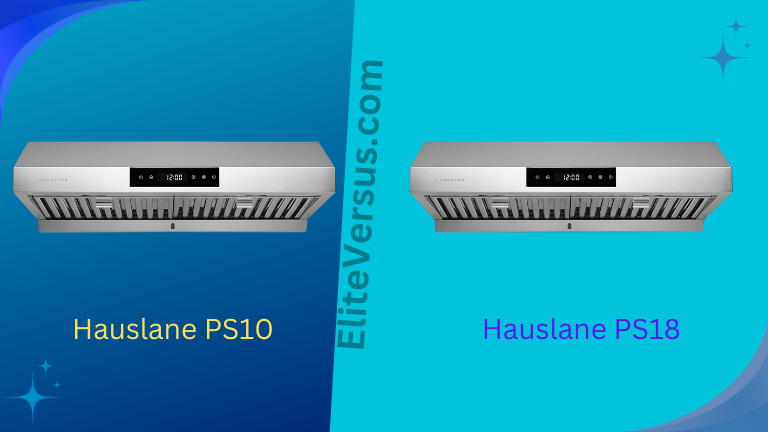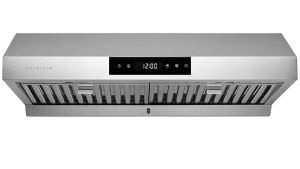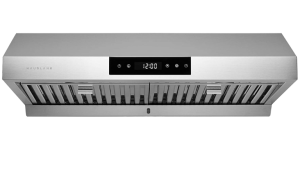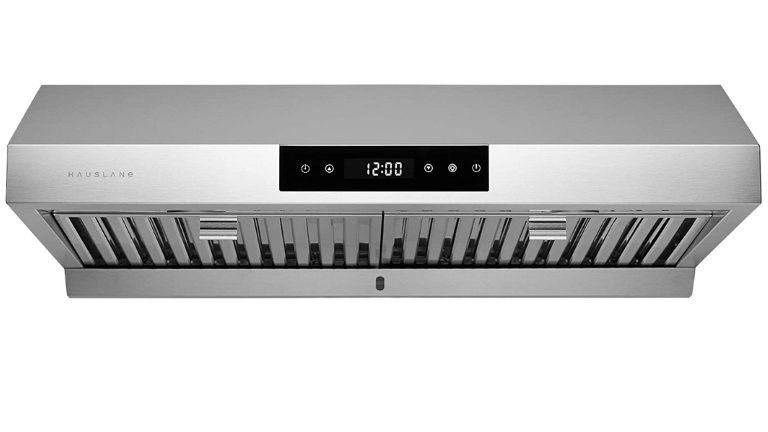Hauslane PS10 vs Hauslane PS18 – Blog
Hauslane PS10 vs Hauslane PS18: Do you wish the smells from the kitchen would go away? Perhaps you want to add some flair to your house while also enhancing its air quality.
Watts: 190W
Intensity Level: 2 Levels
Speed Settings: 3 Settings
Noise: 56dB
Weight: 43.7 Pounds
Watts: 266W
Intensity Level: 1 Levels
Speed Settings: 6 Settings
Noise: 50dB
Weight: 41 Pounds (Lite Weight)
The Hauslane PS10 and PS18 are the best range hoods on the market. Which of these high-powered, stylish kitchen appliances is best for your needs? They are all intended to keep your kitchen neat.
This article will help you choose between the Hauslane PS10 and Hauslane PS18 range hoods by outlining the key differences between them in terms of functionality, performance, and looks. Find out which of these two models is best suited to your requirements, whether you’re an avid home cook or just want to improve your kitchen’s functioning.

A brief overview of the key similarities and differences.
Noise Level: When compared to the Hauslane PS10, which generates 56 dB of noise, the Hauslane PS18 is much louder, at 76 dB. As a result, the PS18 makes a bit more noise, making that an issue to think about while deciding between the two versions.
Watts: The Hauslane PS18 draws 266 W of electricity, whereas the PS10 draws 190 W; hence, the PS18 is the more powerful option. This difference in wattage must be considered while choosing between the two models.
Numbers of Speeds: The Hauslane PS18 has an impressively wide range of speed choices, letting you adjust the level of ventilation to suit your demands as a cook. The variety of possibilities is significantly smaller on the Hauslane PS10, which only has three speed levels.
Weight: There is a marginal distinction between the two models in terms of weight. When compared to its sibling, the Hauslane PS10, the PS18 weighs in at just 41 pounds, a significant weight savings. The weight difference may be an issue during setup and transport.
Dimension: The Hauslane PS18’s small footprint is the result of its proportions of 30 by 22 by 7 inches. In contrast, the Hauslane PS10’s dimensions are 33.5 by 25.6 by 12.25 inches. The size variation may have an effect on the amount of room needed for setup and use.
Similarities: The PS10 and PS18 from Hauslane are both equipped with a plethora of useful extras. There is a 2-year limited warranty, a motor warranty, user-friendly touch screen controls, powerful suction capabilities, energy-efficient LED lighting, a delayed auto shut-off after cooking, dishwasher-safe baffle filters for easy cleaning, a sleek stainless steel color for a modern aesthetic, and much more. Both of these models have cutting-edge capabilities, making them excellent purchases for any home’s kitchen.
Price: The Hauslane PS10 is the more cost-effective choice, and it provides remarkable value for the money. The Hauslane PS18, on the other hand, has more expensive features and better performance, so its pricing reflects that.
Popular; The Hauslane PS18 has become quite popular among Amazon customers. Customers looking for a top-tier cabinet range hood now have this option to choose from. The Hauslane PS10, on the other hand, may not have been as widely used despite its high reputation.
Brightness Level: The Hauslane PS10 has an integrated LED light source, although there is only one brightness level available. In comparison, the Hauslane PS18 goes above and beyond by giving consumers an option between two brightness levels, giving them greater control over the mood they want to create in the kitchen.
| Hauslane PS10 vs Hauslane PS18 | ||
|---|---|---|
 |  |
|
| Buy on Amazon | Buy on Amazon | |
| Brand | Hauslane | Hauslane |
| Warranty | 2-Years | 2-Years |
| Touch screen |  |  |
| WATTS | 190W | 266W |
| Intensity Level | 2 Level | 1 Level |
| Noise | 56dB | 50dB |
| Speed Settings | 3 Settings | 6 Settings |
| Delay Auto Shut-Off |  |  |
| Material | Stainless Steel | Stainless Steel |
| LED Light |  |  |
| Weight | 43.7 Pounds | 41 Pounds |
| Dimension | 33.5 x 25.6 x 12.25 inches | 30 x 22 x 7 inches |

